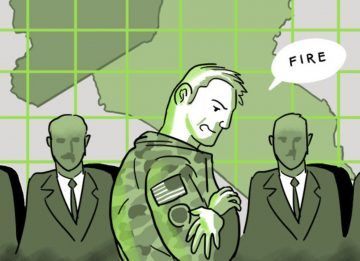Dina Temple-Raston at NPR:
 The crowded room was awaiting one word: “Fire.”
The crowded room was awaiting one word: “Fire.”
Everyone was in uniform; there were scheduled briefings, last-minute discussions, final rehearsals. “They wanted to look me in the eye and say, ‘Are you sure this is going to work?’ ” an operator named Neil said. “Every time, I had to say yes, no matter what I thought.” He was nervous, but confident. U.S. Cyber Command and the National Security Agency had never worked together on something this big before.
Four teams sat at workstations set up like high school carrels. Sergeants sat before keyboards; intelligence analysts on one side, linguists and support staff on another. Each station was armed with four flat-screen computer monitors on adjustable arms and a pile of target lists and IP addresses and online aliases. They were cyberwarriors, and they all sat in the kind of oversize office chairs Internet gamers settle into before a long night.
“I felt like there were over 80 people in the room, between the teams and then everybody lining the back wall that wanted to watch,” Neil recalled. He asked us to use only his first name to protect his identity. “I’m not sure how many people there were on the phones listening in or in chat rooms.”
More here.
